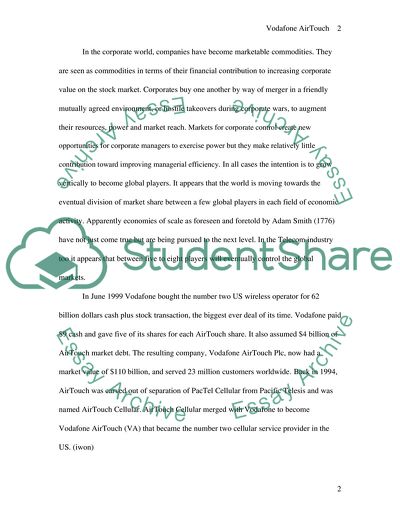Cite this document
(“Vodafone AirTouch Essay Example | Topics and Well Written Essays - 3000 words”, n.d.)
Vodafone AirTouch Essay Example | Topics and Well Written Essays - 3000 words. Retrieved from https://studentshare.org/marketing/1543139-case-study-assignment-for-mergers-and-acquisitions-module-see-assessment-criteria-section-of-an-order-form
Vodafone AirTouch Essay Example | Topics and Well Written Essays - 3000 words. Retrieved from https://studentshare.org/marketing/1543139-case-study-assignment-for-mergers-and-acquisitions-module-see-assessment-criteria-section-of-an-order-form
(Vodafone AirTouch Essay Example | Topics and Well Written Essays - 3000 Words)
Vodafone AirTouch Essay Example | Topics and Well Written Essays - 3000 Words. https://studentshare.org/marketing/1543139-case-study-assignment-for-mergers-and-acquisitions-module-see-assessment-criteria-section-of-an-order-form.
Vodafone AirTouch Essay Example | Topics and Well Written Essays - 3000 Words. https://studentshare.org/marketing/1543139-case-study-assignment-for-mergers-and-acquisitions-module-see-assessment-criteria-section-of-an-order-form.
“Vodafone AirTouch Essay Example | Topics and Well Written Essays - 3000 Words”, n.d. https://studentshare.org/marketing/1543139-case-study-assignment-for-mergers-and-acquisitions-module-see-assessment-criteria-section-of-an-order-form.


